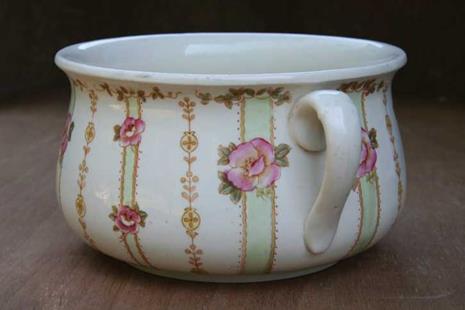The task of supplying hot water to the bath became easier with new innovations, one of which was the cast iron stove. A water vat was located at the back of the stove. As the family baked and prepared meals, the stove heated water for baths and other uses.
Heaters were eventually attached to the portable tub so that hot water did not need to be carried. They were later attached to the permanently installed tub, and eventually the hot water came from a single source in the home, the water heating system most homes use today.
The Privy
Facilities for toileting have also changed over time. The seventeenth – and eighteenth-century American homes made use of the privy (an English word derived from the Latin word privatus, meaning secret, not publicly known) or outhouse installed outside the house. Indoors, the chamber
 |
 |
pot (see Figure 1.3) was used during bad weather or at night, and the waste was disposed of as quickly as possible. Made of ceramic or metal, the small pot could be stored under a bed, in a cabinet, or in a stool often called a commode. To be more discrete, the chamber pot was later designed into a piece of furniture like a chair called a closestool, or night chair, which had the bottom enclosed to hide the pot. Other chamber pots were allowed to sit out in the room, and these were usually highly decorated.


